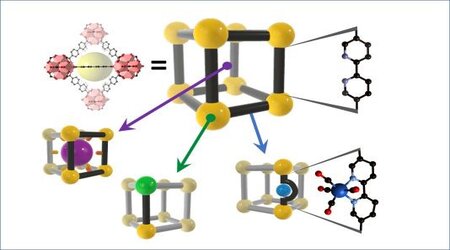Chem. Sci., 2020, 11, 4031-4050
Abstract: Structural insight into reactive species can be achieved via strategies such as matrix isolation in frozen glasses, whereby species are kinetically trapped, or by confinement within the cavities of host molecules. More recently, Metal-organic Frameworks (MOFs) have been used as molecular scaffolds to isolate reactive metal-based species within their ordered pore networks. These studies have uncovered new reactivity, allowed observation of novel metal-based complexes and clusters, and elucidated the nature of metal-centred reactions responsible for catalysis. This perspective considers strategies by which metal species can be introduced into MOFs and highlights some of the advantages and limitations of each approach. Furthermore, the growing body of work whereby reactive species can be isolated and structurally characterised within a MOF matrix will be reviewed, including discussion of salient examples and the provision of useful guidelines for the design of new systems. Novel approaches that facilitate detailed structural analysis of reactive chemicals moieties are of considerable interest as the knowledge garnered underpins our understanding of reactivity and thus guides the synthesis of materials with unprecedented functionality.
Full text: Option 1

